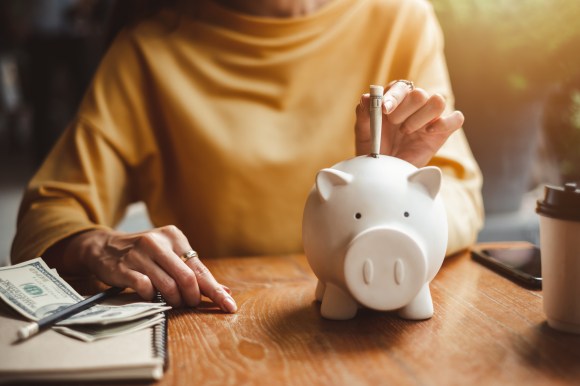What would you do if your car broke down and the mechanic said it would cost $500 to fix it? Over half of Americans have less than $1,000 stashed away. Even scarier, in a survey, 32% of participants admitted to having no savings. So, if one of them had been stuck with that car bill, chances are their day-to-day budget would suffer.
Right now, millions of Americans are living paycheck to paycheck and can’t afford even the smallest hiccup to their budget. One of the biggest push backs I get when talking about saving for an emergency and other goals is not having any spare money in the budget. Today, I’m going to show you how you can easily set up an emergency fund that could help you weather any potential budget busters.
How Much Money Should I have Saved in My Emergency Fund?
Before you start an emergency fund, you should first look at how much money you should save in that fund. The typical advice from financial planners and experts is having three to six months of essential expenses stashed away.
If you’re following Dave Ramsey’s baby step plans, your starter emergency fund should be $1,000. After you pay off your debt that fund should jump to having three to six months of expenses saved. You can also increase that amount but using that $1,000 as your first goal may be easier to achieve.
Now that you have the amount you should be saving, it’s time to set up a plan and track your progress. If you’re using an app like Mint, you can use the goals feature to add in your amount and track your progress. On your desktop, you can log into Mint, head over to the goals tab and choose an emergency fund. In there, Mint has a handy guide to help you out with your savings and will keep you up to date on your goals.
5 Ways to Save More Money for Emergencies
Now that you have your goal set and your app handy, it’s time to start saving. Here are five ways you can jump-start your emergency fund without too much hassle.
- Become a grocery hacker. With food typically being an individual’s largest expense, people can save a significant amount of money when they go grocery shopping instead of eating out. Switching to store brands, shopping seasonally with produce, and using apps like Fetch and iBotta to give you some cashback can be easy ways to save money that you can then stash away in your emergency fund.
- Negotiate with your cable company. It may take ten minutes of your time, but we’ve found talking to our internet provider to snag a deal for 6-12 months was well worth it. Even if you only save $15-$20 a month, if you look at the annual savings, that’s an extra $180 – $240!
- Switch your smartphone plan. With more options available, there are ways you can stay on the big networks without paying high prices. I’ve been able to grab two lines for less than $50 a month by switching cell phone companies!
- Shop around for insurance. Just because you received a good deal on your insurance years ago, doesn’t mean it’s still the best deal now. We’ve slashed our bill in half some years, and one year we got a refund of a few hundred dollars by negotiating with our company.
- Sell your stuff. Whether you throw a yard sale, list online with eBay, or go local with Craigslist, unloading what you don’t love or use can free up space in your place and get some cash in your wallet.
If you haven’t already, try tackling each of these goals over the next month or so. By spreading out these tasks and focusing on one of them at a time, you can make some headway on your emergency fund!
Your Take on Emergency Funds
I hope these tips make it much easier for you to start stashing away cash for your emergency fund. I’d love to get the conversation started on becoming super savers, so please share any ideas you have on stashing more money away!

